

Published in the United States of America by Cherry Lake Publishing Ann Arbor, Michigan www.cherrylakepublishing.com Content Adviser: Jacob Zeiger, Production Support Engineer, the Boeing Company Photo Credits: Cover and page 1, Dwight Smith/Shutterstock, Inc.; page 5, Patrick Allen/Dreamstime.com; page 7, Dan Simonsen/Shutterstock, Inc.; page 9, Nicholas Rjabow/Shutterstock, Inc.; page 11, iStockphoto/ GoosePhotographic; page 13, iStockphoto/Linda Braceland; page 15, RTimages/Shutterstock, Inc.; page 17, corepics/Shutterstock, Inc.; page 19, Sergey Kamshylin/Shutterstock, Inc.; page 21, iStockphoto/Brian Brown. On the Cover: The World War II P-40 fighter plane with sharks mouth painted on its nose is a propeller plane. Copyright 2012 by Cherry Lake Publishing
All rights reserved. No part of this book may be reproduced or utilized in any form or by any means without written permission from the publisher.
LIBRARY OF CONGRESS CATALOGING-IN-PUBLICATION DATA Masters, Nancy Robinson. p. cm.(Community connections) Includes bibliographical references and index. cm.(Community connections) Includes bibliographical references and index.
ISBN-13: 978-1-61080-070-9 (lib. bdg.) ISBN-10: 1-61080-070-2 (lib. bdg.) 1. Propeller-driven aircraftJuvenile literature. I. II. II.
Title: Propeller plane. TL547.M353 2011 629.133343dc22 2010051451 Cherry Lake Publishing would like to acknowledge the work of The Partnership for 21st Century Skills. Please visit www.21stcenturyskills.org for more information. Printed in the United States of America Corporate Graphics Inc. July 2011 CLFA09
CONTENTS
TAKE OFF!
The pilot in the airplane
cockpit calls out Clear! He is about to start the engine. Power from the engine turns the
propeller .
The propeller is a long blade attached to the airplane engine. The spinning propeller scoops air as it turns. This pulls the airplane forward down the runway. The engine turns the propeller very fast before the airplane starts down the runway.  The pilot pulls back on the controls. The wings lift the airplane into the sky! The power from the engine keeps the propeller spinning.
The pilot pulls back on the controls. The wings lift the airplane into the sky! The power from the engine keeps the propeller spinning.
It pulls the airplane forward through the air. The airplane is soon out of sight. The pilot sits inside the airplane cockpit behind the spinning propeller. 
THINK!
Can you swim? Think of the propeller pulling the airplane through the air. Now imagine a swimmer doing the backstroke. He pulls his arms through the water.
How are a swimmers arms like a propeller? How are they different?
FOUR FORCES
Four forces act like a tug-of-war on propeller airplanes.
Gravity pulls the airplane down.
Lift pushes the airplane up.
thrust moves the airplane forward.
Drag slows the airplane down. You cannot see these forces.
You only see how the propeller airplane reacts to them. A pilot uses the controls and the forces you cant see to make the airplane roll.  Gravity and lift are opposites. A propeller plane needs lift to fly. The plane takes off when lift is stronger than gravity. Thrust and drag are also opposites.
Gravity and lift are opposites. A propeller plane needs lift to fly. The plane takes off when lift is stronger than gravity. Thrust and drag are also opposites.
Thrust has to be stronger than drag for the plane to take off. Gravity and lift become more equal once the plane is flying. So do thrust and drag. A plane must gain speed in order to take off.  Propeller planes have control surfaces on the wings and the tail. The pilot uses hand or foot controls to move these surfaces.
Propeller planes have control surfaces on the wings and the tail. The pilot uses hand or foot controls to move these surfaces.
Air flows across the control surfaces. Moving the control surfaces changes how the air flows across them. This makes the propeller airplane fly up, down, left, or right. Flaps are control surfaces on the back of the wing. Can you find this airplanes flaps? 
MAKE A GUESS!
Some propeller airplanes have more than one engine. Why do you think some propeller airplanes need more than one engine?
SHAPES AND SIZES
Wings and propellers are
airfoils .
An airfoil is a shape created to direct the flow of air. Wings are curved at the top and flat on the bottom. Air flows faster over the top and slower across the bottom. This creates lift, making the airplane fly. What do you notice about the shape of this planes wing?  Inventors Orville and Wilbur Wright created the first airfoil-shaped propeller. They twisted a wings shape to make a propeller blade.
Inventors Orville and Wilbur Wright created the first airfoil-shaped propeller. They twisted a wings shape to make a propeller blade.
Air flowed evenly across the entire propeller blade. Propellers are made in different shapes and sizes. They fit the different shapes and sizes of engines. The propeller and engine are the power plant of the airplane. Propeller blades might be long or short.  The first airplane propellers were made from wood.
The first airplane propellers were made from wood.  The first airplane propellers were made from wood.
The first airplane propellers were made from wood.
Most propellers today are made of metal. Many propellers might be made of composite materials in the future. Fiberglass is a composite material made of glass and plastic. Fiberglass and other composites are strong. They weigh less than metal. 
CREATE!
Draw three or four airfoils on different pieces of paper.

CREATE!
Draw three or four airfoils on different pieces of paper.
Use the airfoils to create some new ideas for airplanes of the future. How can you change the wings? What might you do with propellers?
MANY USES
Propeller planes carry passengers and mail. They drop water to put out fires. They take medicine to hospitals. Scientists use propeller planes to learn about the weather. Farmers use them to drop seeds or spray crops to kill insects.
But are they fun to fly? Ask a pilot and he or she will say yes! A propeller plane can quickly cover large sections of crops. 



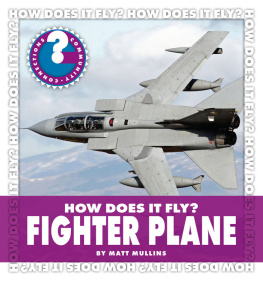
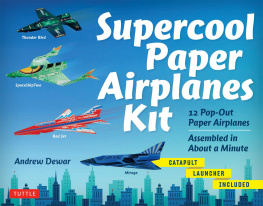


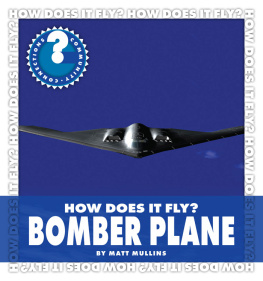
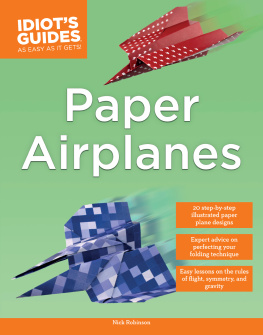
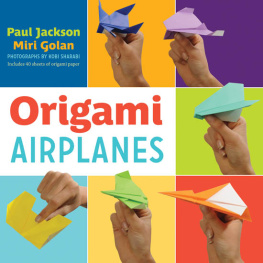
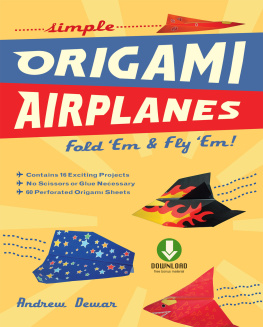
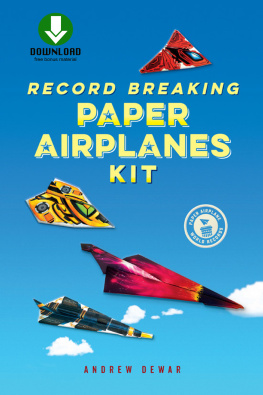
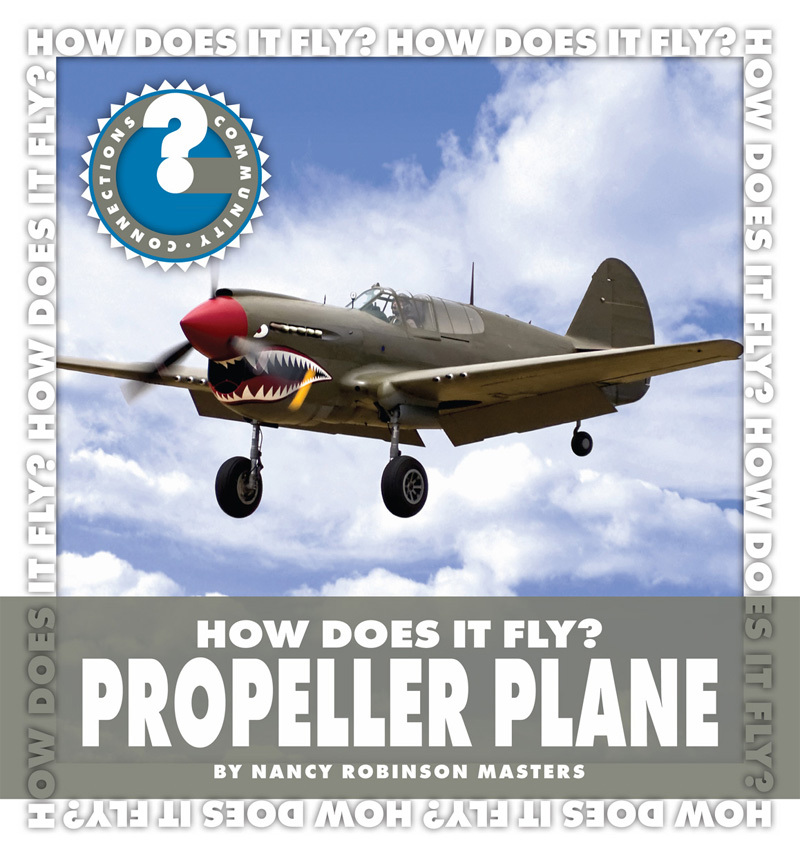

 Published in the United States of America by Cherry Lake Publishing Ann Arbor, Michigan www.cherrylakepublishing.com Content Adviser: Jacob Zeiger, Production Support Engineer, the Boeing Company Photo Credits: Cover and page 1, Dwight Smith/Shutterstock, Inc.; page 5, Patrick Allen/Dreamstime.com; page 7, Dan Simonsen/Shutterstock, Inc.; page 9, Nicholas Rjabow/Shutterstock, Inc.; page 11, iStockphoto/ GoosePhotographic; page 13, iStockphoto/Linda Braceland; page 15, RTimages/Shutterstock, Inc.; page 17, corepics/Shutterstock, Inc.; page 19, Sergey Kamshylin/Shutterstock, Inc.; page 21, iStockphoto/Brian Brown. On the Cover: The World War II P-40 fighter plane with sharks mouth painted on its nose is a propeller plane. Copyright 2012 by Cherry Lake Publishing
Published in the United States of America by Cherry Lake Publishing Ann Arbor, Michigan www.cherrylakepublishing.com Content Adviser: Jacob Zeiger, Production Support Engineer, the Boeing Company Photo Credits: Cover and page 1, Dwight Smith/Shutterstock, Inc.; page 5, Patrick Allen/Dreamstime.com; page 7, Dan Simonsen/Shutterstock, Inc.; page 9, Nicholas Rjabow/Shutterstock, Inc.; page 11, iStockphoto/ GoosePhotographic; page 13, iStockphoto/Linda Braceland; page 15, RTimages/Shutterstock, Inc.; page 17, corepics/Shutterstock, Inc.; page 19, Sergey Kamshylin/Shutterstock, Inc.; page 21, iStockphoto/Brian Brown. On the Cover: The World War II P-40 fighter plane with sharks mouth painted on its nose is a propeller plane. Copyright 2012 by Cherry Lake Publishing The pilot pulls back on the controls. The wings lift the airplane into the sky! The power from the engine keeps the propeller spinning.
The pilot pulls back on the controls. The wings lift the airplane into the sky! The power from the engine keeps the propeller spinning.
 Gravity and lift are opposites. A propeller plane needs lift to fly. The plane takes off when lift is stronger than gravity. Thrust and drag are also opposites.
Gravity and lift are opposites. A propeller plane needs lift to fly. The plane takes off when lift is stronger than gravity. Thrust and drag are also opposites. Propeller planes have control surfaces on the wings and the tail. The pilot uses hand or foot controls to move these surfaces.
Propeller planes have control surfaces on the wings and the tail. The pilot uses hand or foot controls to move these surfaces.
 Inventors Orville and Wilbur Wright created the first airfoil-shaped propeller. They twisted a wings shape to make a propeller blade.
Inventors Orville and Wilbur Wright created the first airfoil-shaped propeller. They twisted a wings shape to make a propeller blade. The first airplane propellers were made from wood.
The first airplane propellers were made from wood. 
